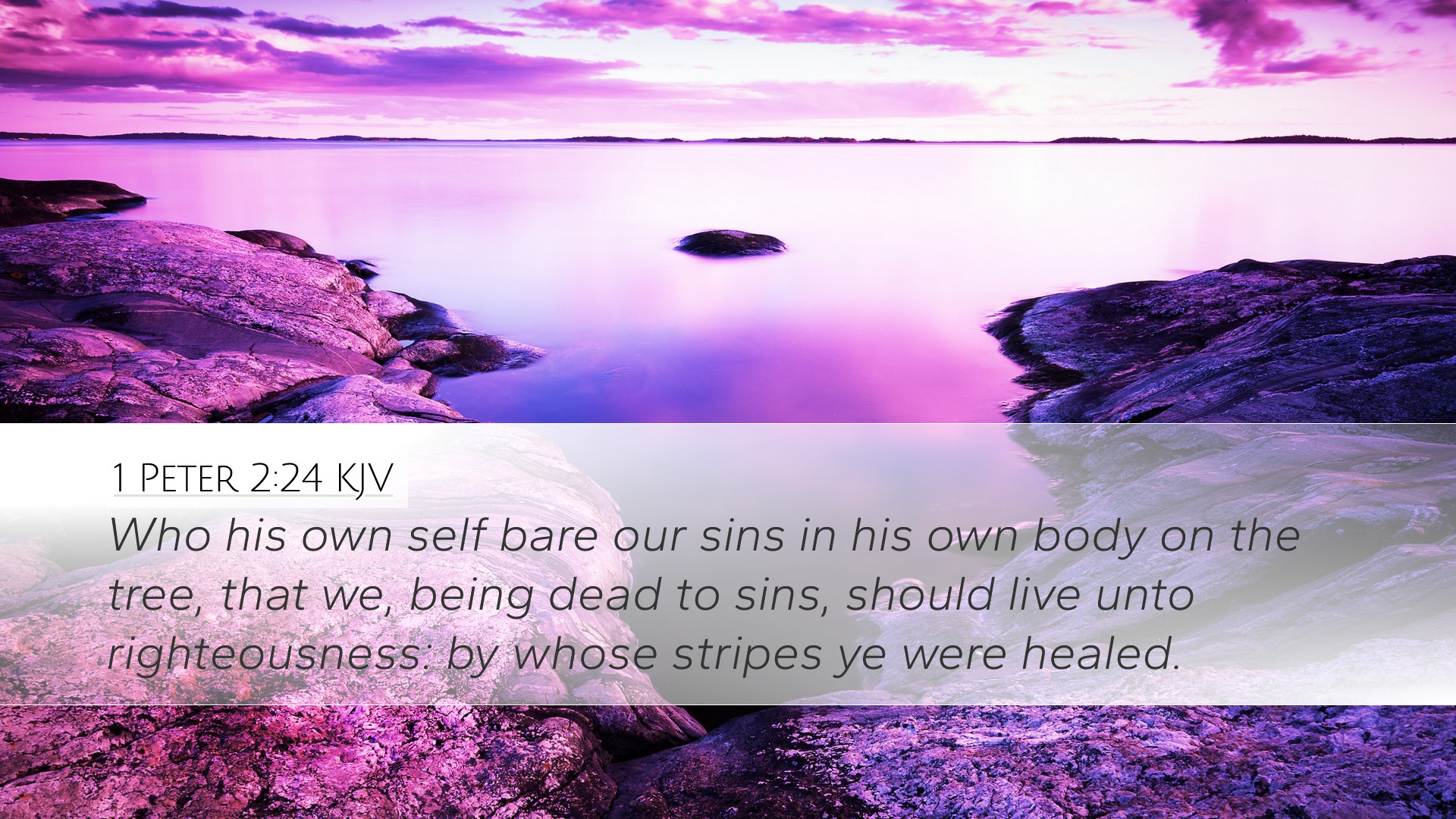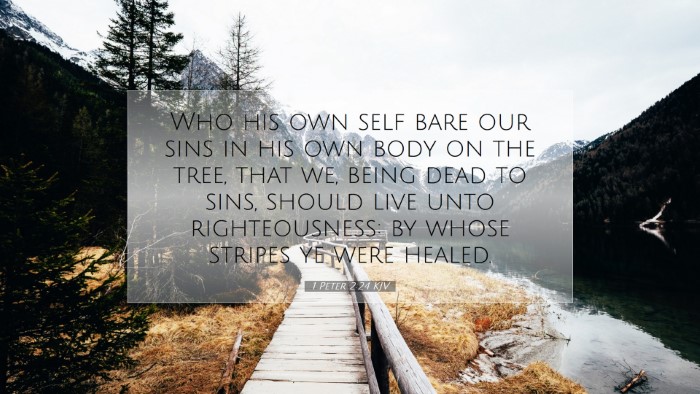Commentary on 1 Peter 2:24
Verse: "Who his own self bare our sins in his own body on the tree, that we, being dead to sins, should live unto righteousness: by whose stripes ye were healed."
Introduction
This verse is a profound declaration of the atoning work of Christ, emphasizing the sacrificial nature of His death and its implications for believers. The commentaries from noted theologians such as Matthew Henry, Albert Barnes, and Adam Clarke provide rich insights that deepen our understanding of this pivotal scripture.
Exegesis
1. "Who his own self bare our sins"
Henry underscores the personal nature of Christ's sacrifice, noting that it was not through an agent or ritual but through His own person that He addressed the weight of humanity's sin. This reflects the doctrine of substitutionary atonement, where Jesus takes upon Himself the sins of the world.
2. "In his own body on the tree"
Barnes elaborates on the significance of 'the tree,' referencing the cross. In biblical terms, a "tree" signifies a curse—highlighting the shame and suffering Christ endured. He echoes the sentiments from Deuteronomy 21:23, where a hanged man is declared accursed, thus indicating that Christ bore our curse.
3. "That we, being dead to sins"
Clarke explains that this phrase represents the transformative power of Christ's sacrifice. By His death, believers are spiritually resurrected, freed from sin's dominion. This declares a duality: the death of Christ calls for a death to sin in the believer's life, inviting a new way of living that is reflective of righteousness.
4. "Should live unto righteousness"
This phrase calls believers into action. Henry notes that living unto righteousness is not just a duty but a fruit of salvation. The theology of sanctification emerges from this concept—an inward transformation leading to outward manifestations of godly living.
5. "By whose stripes ye were healed"
Barnes cites Isaiah 53:5, correlating the suffering of Christ with the healing provided to believers. The term 'stripes' refers to the lashes He received during His passion, which not only fulfill prophetic scripture but demonstrate that through His anguish, healing is available to all who believe. The healing is both spiritual and physical, encompassing the holistic salvation offered through the cross.
Theological Implications
This verse embodies core theological principles, including:
- Substitutionary Atonement: Jesus Christ's personal bearing of our sins highlights the depth of His love and the seriousness of sin.
- Transformation and Sanctification: The shift from being dead to sins to living in righteousness signifies the work of the Holy Spirit in the believer's heart, producing a life of obedience and holiness.
- Healing: The promise of healing underscores the holistic nature of salvation, offering not just forgiveness but restoration to wholeness.
Practical Applications
For pastors and church leaders, this passage serves as a vital reminder of the essence of the Gospel. It encourages the following:
- Preaching the Cross: Highlighting Christ's sacrifice and its effects on our lives should remain central to the message proclaimed from the pulpit.
- Encouraging Holiness: The call to live righteously serves as a challenge to believers to assess their lives in light of Christ's work.
- Offering Hope: The assurance of healing and restoration must be communicated to a world grappling with sin and suffering.
Conclusion
1 Peter 2:24 stands as a powerful testament to the great exchange at the cross—Christ bearing our sins and making a way for our transformative relationship with God. As we meditate on this verse, the profound implications of Christ's atoning work inspire both reverence and a call to live our lives for His glory.


